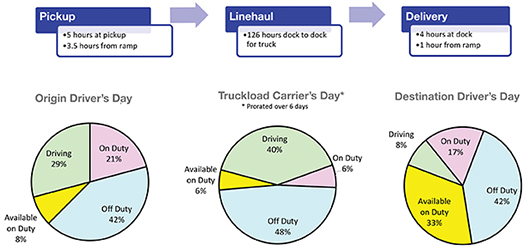One crew could handle traffic (which would have otherwise required the use of two or three crews), while reduced weight generated fuel and track savings (estimated at 10 to 15 percent less than standard intermodal).
Previously, two 40-foot containers would be carried on a 63,000-pound rail car; with doublestack transportation, ten 40-foot containers can be carried by a 161,000-pound stack car. Rail car weight per container decreased from 31,500 to 16,100—a reduction of almost half.


In the past 30 years, intermodal has successfully penetrated the long-haul truck market because the length of haul (1,400 to 2,000 miles) is sufficient for railroads to overcome the advantages trucks have in the short haul.
Operationally, railroads provide a reliable transit time by operating intermodal unit trains that run intact from origin to destination ramp.
The introduction of articulated cars and the elimination of enroute switching not only improved transit reliability, but service by reducing the likelihood of cargo loss and damage.
To date, however, temperature-controlled transportation has largely resisted this rail conversion because so much capacity resides with small trucking companies that rely on owner-operators.
Large motor carriers operate a regional network with fixed terminals and domiciled drivers supporting a 300 to 600-mile length of haul. Most eschew longhaul routes and seasonal freight. Smaller companies lack such a network and generally have lower rates.
The Value Proposition
The historical value proposition of intermodal has been to look like truckload shipping, but offer a discount to incent diversion.
A traditional rule of thumb has been that intermodal is ‘truck plus one day’ (adding one day to standard truck transit time, i.e., 500 miles per day), with a discount of 5 to 15 percent.
In most cases, the intermodal advantage over truck increases with distance. The relative improvement of average cost per mile increases proportionately to the price of fuel. As the price of fuel drops, the minimum distance to compete increases.



